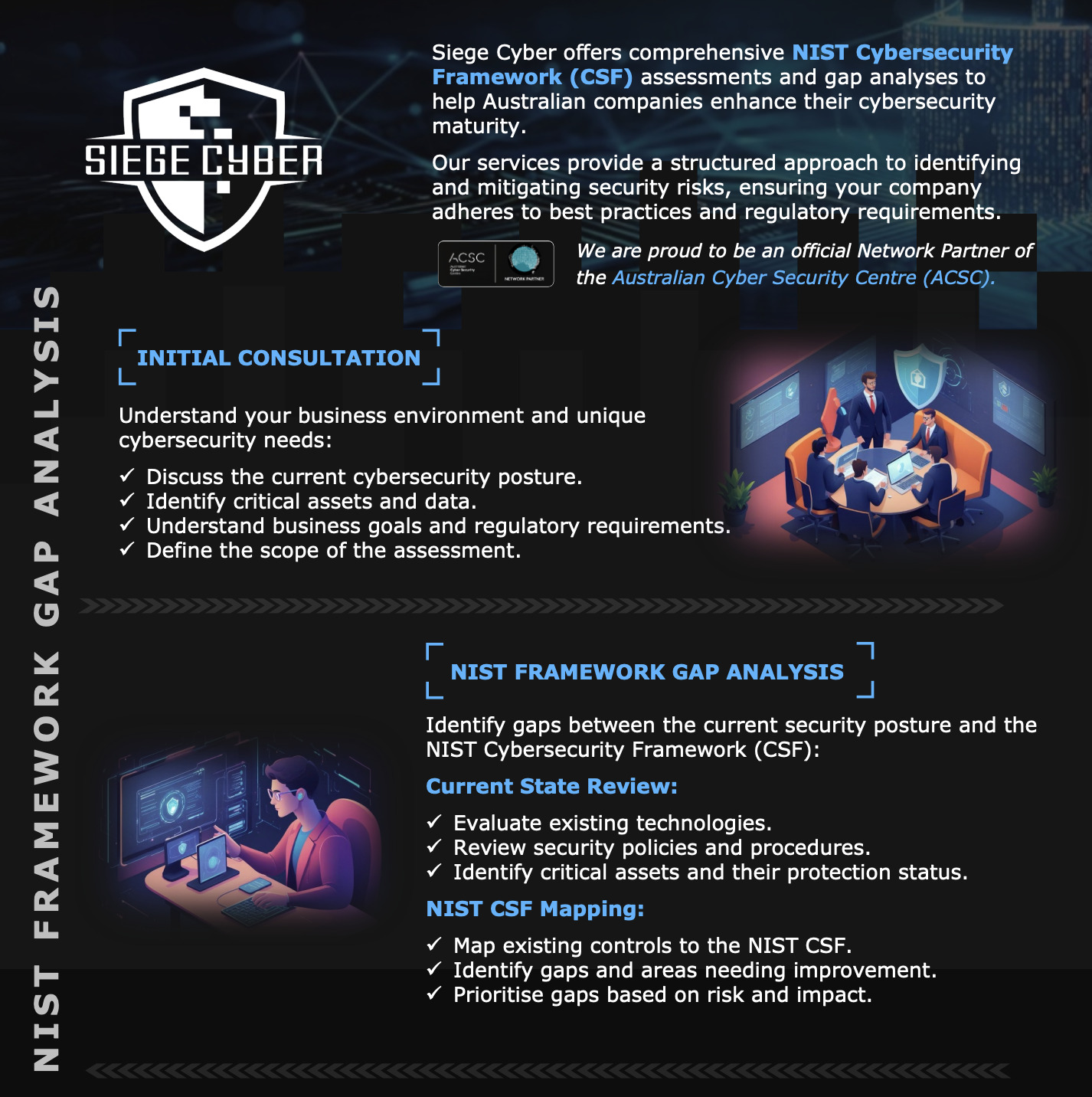NIST CSF Framework Gap Analysis
Initial Consultation:
Objective: Understand your business environment and specific cybersecurity needs.
NIST Framework Gap Analysis:
Objective: Identify gaps between the current security posture and the NIST CSF.
- Current State Review: Evaluate existing policies, processes, and technologies.
- NIST CSF Mapping: Map existing controls to the NIST CSF categories and subcategories.
Cybersecurity NIST Framework Assessment:
Objective: Conduct a detailed assessment of the organisation's cybersecurity posture using the NIST CSF.
Recommendations and Roadmap:
Objective: Provide a detailed roadmap for improving the company’s cybersecurity posture.
- Gap Remediation Plan: Specific actions to address identified gaps for NIST certification.
- Implementation Roadmap: Detailed plan for implementing NIST CSF controls.
- Budget and Resources: Estimation of costs and resources required.
Implementation Support:
Objective: Assist with advice on implementing recommended cybersecurity measures.
- Project Management: Overseeing the implementation process.
- Technical Assistance: Providing technical expertise and support.
- Training and Awareness: Enhancing the organisation's cybersecurity culture.
Continuous Monitoring and Improvement:
Objective: Ensure ongoing cybersecurity resilience and adherence to the NIST CSF.
- Regular Assessments: Periodic reviews and updates of the cybersecurity posture.
- Incident Response Drills: Simulated exercises to test and improve response capabilities.
- Metrics and Reporting: Tracking and reporting on key performance indicators.
Conclusion:
By partnering with Siege Cyber, organisations can enhance their cybersecurity maturity and ensure compliance with the NIST Cybersecurity Framework. Our comprehensive approach includes detailed assessments, tailored recommendations, and ongoing support, providing a robust foundation for safeguarding critical assets and data.
